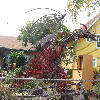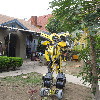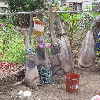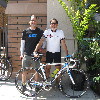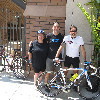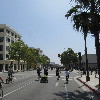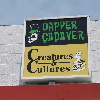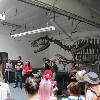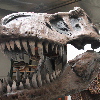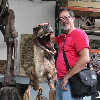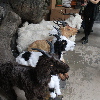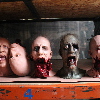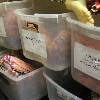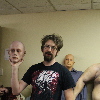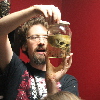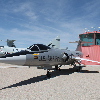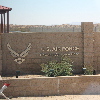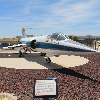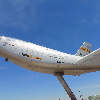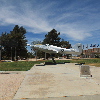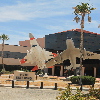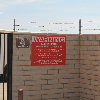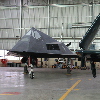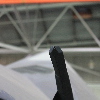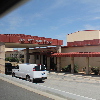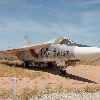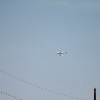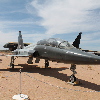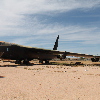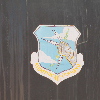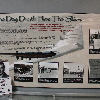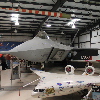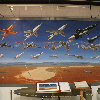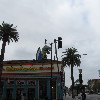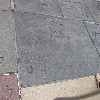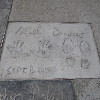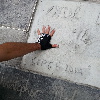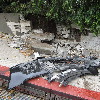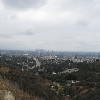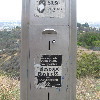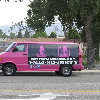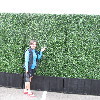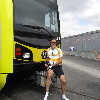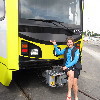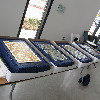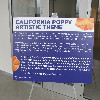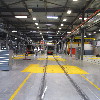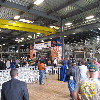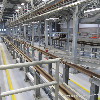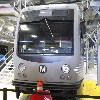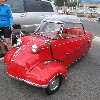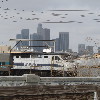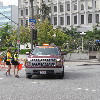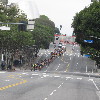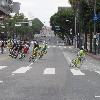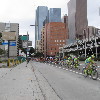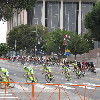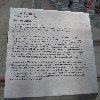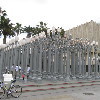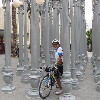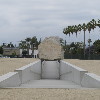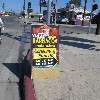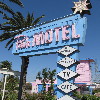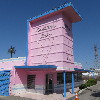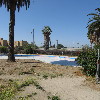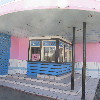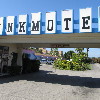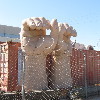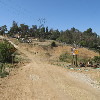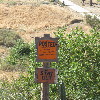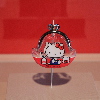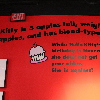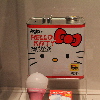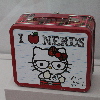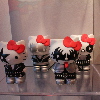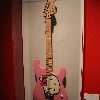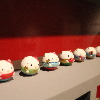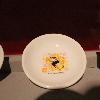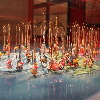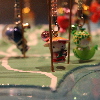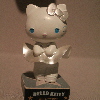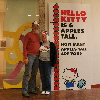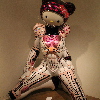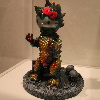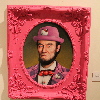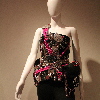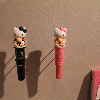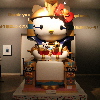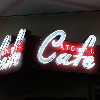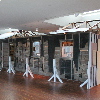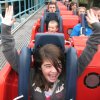For twenty years, I’ve been getting the little catalog of PCC Extension’s courses in the mail, and I never paid any attention to it. But this time, Kathleen was looking through it, and she said, “Hey, they have some day trips and tours in here that you might like.” I picked it up, and had a look, and then I went online and signed up for the day trip and tour of Edwards Air Force Base. I’d gone there about 30 years ago to see the Space Shuttle land, but never went for a tour. I thought it could be interesting.
So I rode my bike over to PCC in the morning to meet up with the tour bus. I figured that it’s 1/2 mile closer than riding to work, so there really was no reason to take the car. And I figured that since PCC is a college, finding bike parking would be easy. I certainly had no idea how hard it was going to be. In the end, I found a fence on the edge of the parking lot and put it there. I’m still a bit dumbfounded that there was not one bike rack anywhere near that parking lot.
It’s a long ride up to Edwards, but we finally got to the gate. We had to wait at the entrance for the public relations guy to come out to meet us. While we were waiting, we had a look at the airplanes they had parked outside the gate. They told us later that they will eventually have a museum at that location.
When the public relations guy got there, he introduced himself and made the arrangements with the guards to let us in. Then he escorted our bus to the NASA flight research center. It used to be Dryden, but it was renamed after Neil Armstrong. We had lunch at the little food court there. Then we had a little time to visit the NASA gift shop, and to look at still more airplanes on display out front.
Then an Air Force bus came to take us on the actual tour of the base. They had a P-59 on display outside. They said it was the first jet-powered fighter for the U.S., but that it didn’t see combat. They said that the German jet fighters didn’t turn out to be decisive in the war, largely due to lack of suitable fuel for them to run on. So that was why our combat planes remained propeller-driven until after the war.
Then it was time for our tour of the flightline. We passed the headquarters building that they said was built in the shape of the B-2 bomber, and then we passed through the gate. They said that we had to put our cameras away at that point. The bus took us around to see airplanes in hangars being repaired, tankers parked outside, and lots of F-22 and F-35 fighters, each one parked under a tent-like canopy. We got to see a pair of F-22s taxi by after returning from a flight. They may be invisible to radar, but they were very loud.
At the start of the tour, they had promised us something extra, and we got that in the middle of the flightline tour. We stopped at a hangar where they have airplanes being restored for display in the museum there. The highlight of that was getting to see the F-117 up close. The guides said that it had had its radar-absorbing coatings removed, and the engine exhaust outlets were covered, since they said that some aspect of the design of the outlets is still classified.
After seeing the restoration hangar, we headed back outside. They took us on a tour of the rest of the base, including the base housing and schools, and even a Starbucks. I guess Starbucks really is everywhere. At the end, they dropped us off at the base museum. We had about 45 minutes there before it was time to head for home. It was all interesting in a nerdy way.
